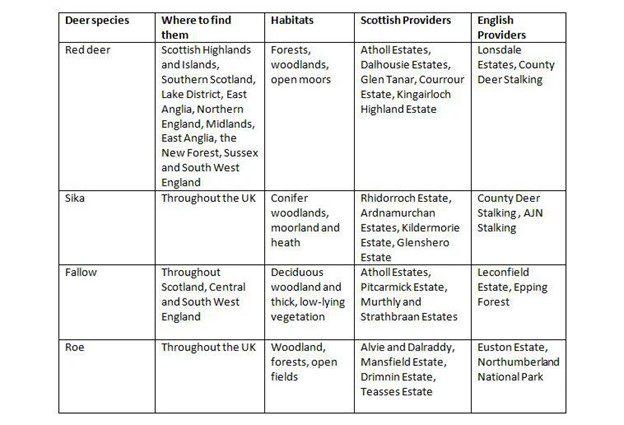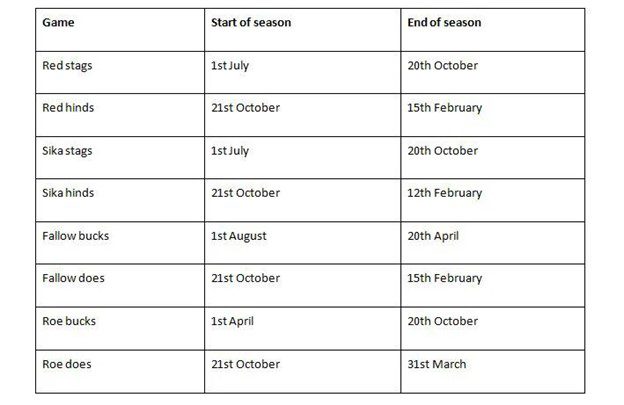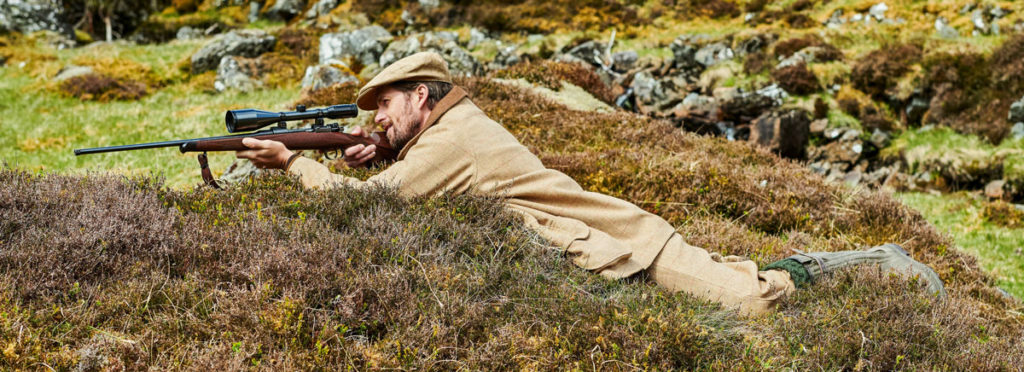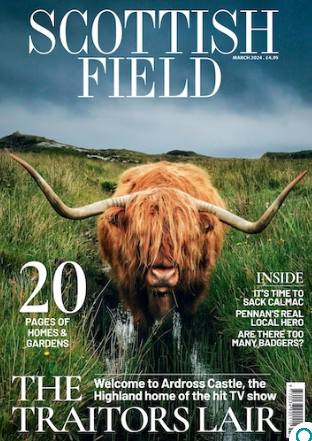
What is deer stalking? Everything you need to know
The experts from House of Bruar share a guide to deer stalking to mark the opening of their latest clothing department in the Perthshire store.
THE pursuit of deer has been part of our lives since the dawn of time. Deer stalking is one of the fastest growing field sports in the UK, and it’s not hard to understand why. It’s an unrivalled opportunity to get out and explore the landscape in all its natural beauty, to discover untrodden paths and immerse yourself in the thrill of the chase, and – if you follow our essential tips – emerge triumphant over whatever the weather throws at you.
On the way you’ll learn about land management, meet people who are steeped in the traditions and history of the sport, and – whether you are successful or not – enjoy seeing deer in their natural habitat.
What is deer stalking?
The process of stalking is to watch and follow a target in a covert way. Deer stalking is the epitome of this, where individuals or groups go undercover on a cross country adventure to pursue defined species in places often inaccessible to vehicles.
Effective deer management is essential to ensure sustainable deer populations and to preserve our natural habitats. Maintaining numbers protects deer from starvation and disease, and reduces the risk of road accidents. It also minimises damage to trees and crops and prevents over-grazing, thus protecting other animals that share the environment.
As a field sport, deer stalking achieves this objective while giving participants the unique opportunity to view these stunning animals in the wild, learn about the management of the species and take part themselves. People travel from all over the world for the unforgettable experience of deer stalking under the wide open skies and across the ever-changing landscapes unique to Scotland. Several species can be stalked at various different times of year across our endless open moors and dramatic hills and through our sweet-smelling forests.
How do I get into deer stalking?
The best way to get started deer stalking is to contact one of the many organisations or professional individuals who run organised deer stalking outings.
For a list of Scottish estates where you can experience deer stalking, including information for beginners, visit www.countrysportscotland.com
For estates and stalking providers across the UK and into Europe check out: www.deerstalkinguk.com/directory/dsuk-stalking-directory/
Once you’ve got the bug, there are several deer stalking courses you can complete to develop your skills. The British Deer Society runs courses for all levels of expertise to ensure that deer stalking is undertaken responsibly and effectively. Its introductory DSC1 certificate will test your skills and knowledge in identifying deer, understanding deer legislation, ballistics, safety, shooting and dealing with carcasses. With this foundation, you can then go on to complete further courses as your interest develops. Find out more at www.bds.org.uk
Where are the best places to go deer stalking?
Where better to start than right on our doorstep? The House of Bruar is set at the heart of Atholl Estates, which is one of the best places you’ll find to stalk our native red deer and other species across a richly varied landscape. There are numerous estates across Scotland and the rest of the UK to stalk deer from open moors to forests – some examples are below:

Do I need a deer stalking licence?
No – a licence is not generally required to shoot deer in the UK. However, deer are a protected species and the right to shoot them is very carefully controlled and subject to a long list of regulations and requirements. That’s why we recommend having your deer stalking experience at the hands of an expert who’ll be able to keep you right on what you need and don’t need, including making recommendations on firearms licence requirements and insurance cover. For more information visit www.basc.org.uk/codes-of-practice/deer-stalking/
When can I stalk deer?
There are various deer stalking seasons, and they mean that you can pretty much stalk deer all year round. Here’s a summary of when you can stalk the four species of deer found in Scotland. There are different seasons for England, Wales, and Northern Ireland.

Source: Scottish Gamekeepers’ Association
What should I wear for deer stalking?
From the ultra-practical to the downright stylish, The House of Bruar is your expert source for all the deer stalking clothing you need. Track down our specialist stalking department and you’ll find a well-thought through selection inspired by nature and underpinned by performance.
Outerwear
From a practical point of view; dress for the weather. We all know the vagaries of the Scottish climate, from scorching sunshine to freezing rain, biting winds, chilling mists and snow – sometimes all in one day. So your choice of outerwear is key.
Footwear
Choosing a pair of rugged and waterproof hunting boots will ensure that wet feet don’t distract you from the job in hand while they carry you effortlessly across different terrains.
Sweaters, Shirts and Fleeces
Make sure you have a number of layers so that you can take some off for those five minutes of sunshine or when your hilltop exertions have warmed you up, and put back on for long periods of waiting for your prey.
Trousers
Practical and comfortable sporting trousers from brands including Páramo, Fjallraven and Seeland feature well thought through characteristics from waterproofing, breathability and numerous handy pockets to reinforced knees and lower legs for comfortable crouching and crawling.
Headwear
As well as keeping you warm and protecting you from the elements, hats and caps help with camouflage.
Binoculars
Your binoculars are your best friend when it comes to deer stalking. Deer are fantastically well-camouflaged, and you will often need to sight your deer at some considerable distance as you stalk.

TAGS

